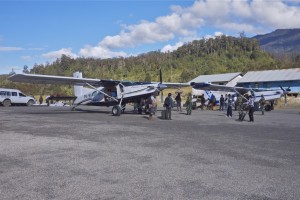 |
| Unloading in Ilaga |
Don’t let the above photo fool you though. The weather has been pretty typical wet season weather this week. Certain parts of the highlands have had 14+ hours of rain every night which has made the ground incredibly soft on many of the airstrips. The worst affected that I’ve been to so far, has been Wangbe.
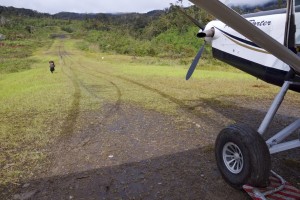 |
| Landing and taxiing tracks in the mud at Wangbe |
Now this airstrip has always been tricky to operate to/from thanks mainly to its unevenness. There are many bounders and a pronounced crown both of which do their very best to throw you off the sides when landing or taking-off. As the village is located in the valley at the bottom of the airstrip I have to land up-slope, try and turn around on the slope at the top without sliding off the sides and then taxi as slowly as possibly back to the bottom to unload. That taxi downhill with a fully laden aircraft is incredibly tricky when the ground is akin to a bog. There’s almost zero braking action and if you start to go a bit too quickly, you can end up skidding with both wheels locked and reverse thrust to slow you down again whilst attempting to use differential braking to stop you sliding off the sides. Did I mention the ditches on both sides?
 |
| Turning round in the mud at the bottom of Wangbe |
At least the bottom part is flat so turning around again isn’t too tricky although there’s still almost no braking action here either. To get a 2.4 tonne tailwheel aircraft to turn around on boggy ground you need to have some momentum. If you stop and try and turn you’ll get stuck. My preferred method is to get a bit of speed up, reduce power to idle and apply right rudder and toe brake to bring the aircraft towards the right-hand side of the airstrip without going off the side and being careful to allow enough room for the tail to come around. Then add in some power and push the control stick forward to get some weight off the rear of the aircraft whilst pushing hard on the left rudder and brake to get the rear of the aircraft to swing around behind you. At this point the tailwheel is in full caster (like a shopping trolley) so once through about 130 degrees of turn, I get back on the right rudder and brake to slow the swing down and straighten up again before reducing power back to idle again.
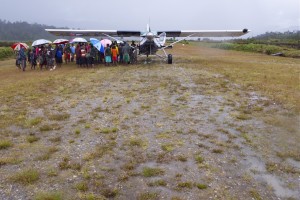 |
| Agadugume floatplane airstrip |
Another airstrip affected by wet weather is Agadugume, although it does not have problems with mud but does suffer from flooding after recent rain. The big thing to consider here is the increased ground roll for take off, especially as it’s at nearly 9000ft (read my article on density altitude to understand why that’s a problem). Trying to explain to the locals why you can only take five of them out when there’s seven or more seats is pretty much impossible and can result in some heated arguments between them as they decide who gets to fly.
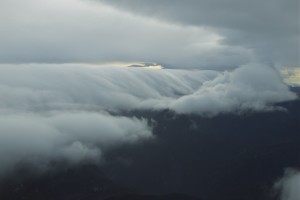 |
| Cloud formations on the ridges east of Puncak Jaya |
Every day this week the ridges have all had some form of cloud formation on them. Usually it’s just plain old cumulus building up due to the sun heating up the wet slopes. Occasionally you get some pretty interesting formations though, like the above. I love weather and reckon if I wasn’t a pilot I’d probably be a weatherman or something!
Discover more from Matt Dearden
Subscribe to get the latest posts sent to your email.
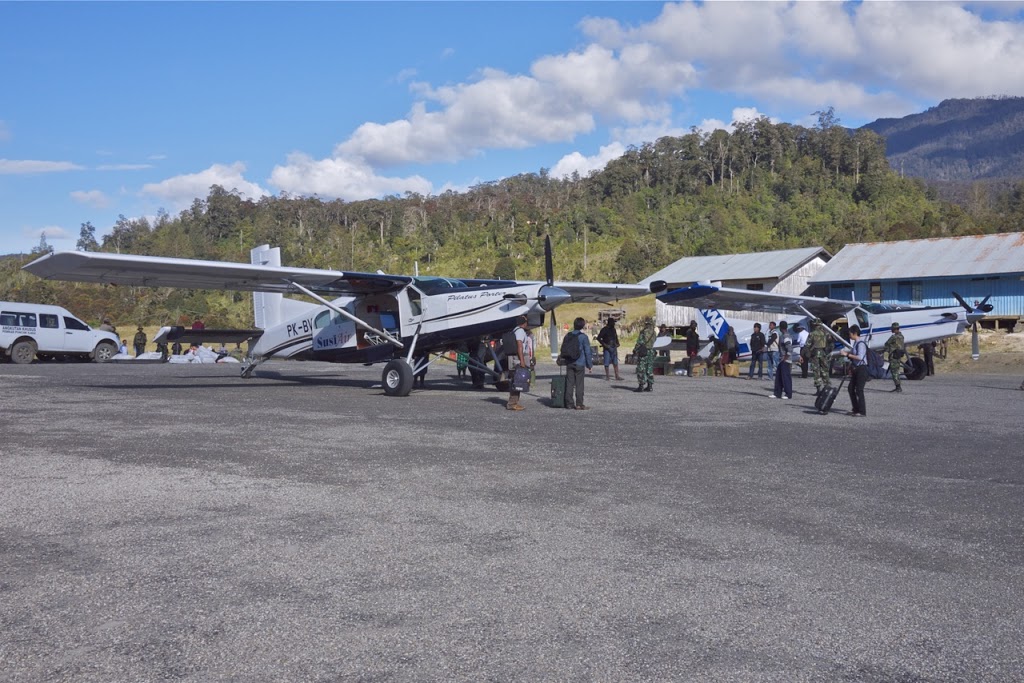
Another excellent post! I liked the description of how to turn around.
Nice photo of the cloud formation.
Thanks Ricardo! Turning around doesn’t always work as planned: http://indopilot.blogspot.com/2013/03/getting-stuck-in-mud.html
;o)